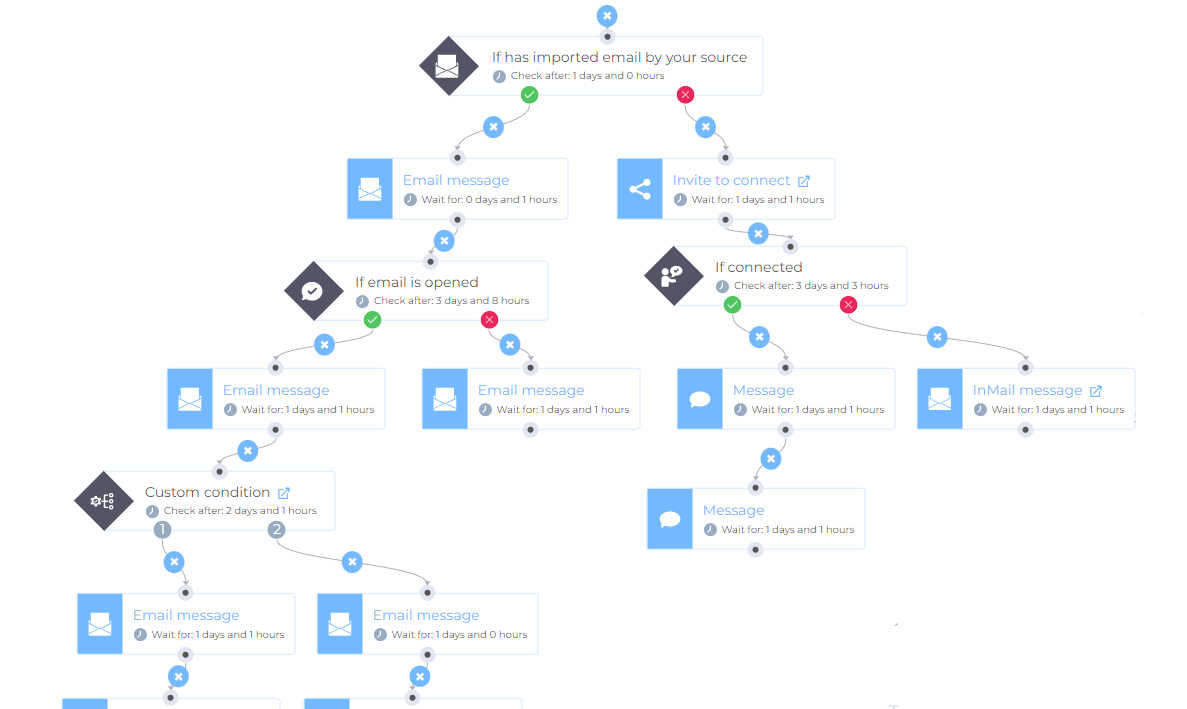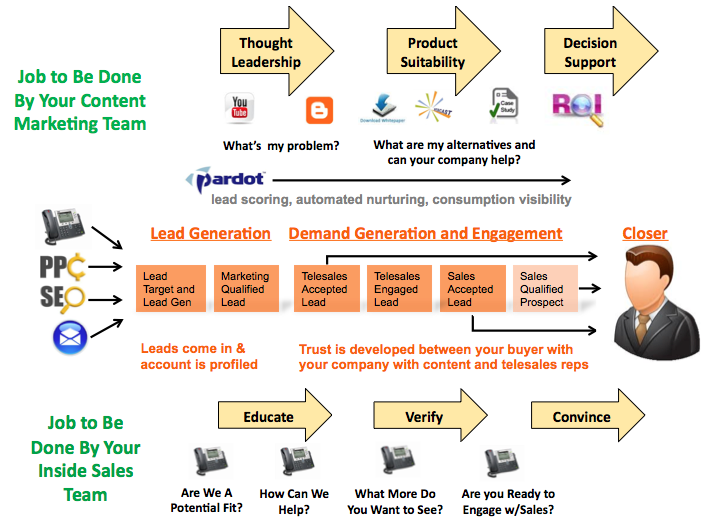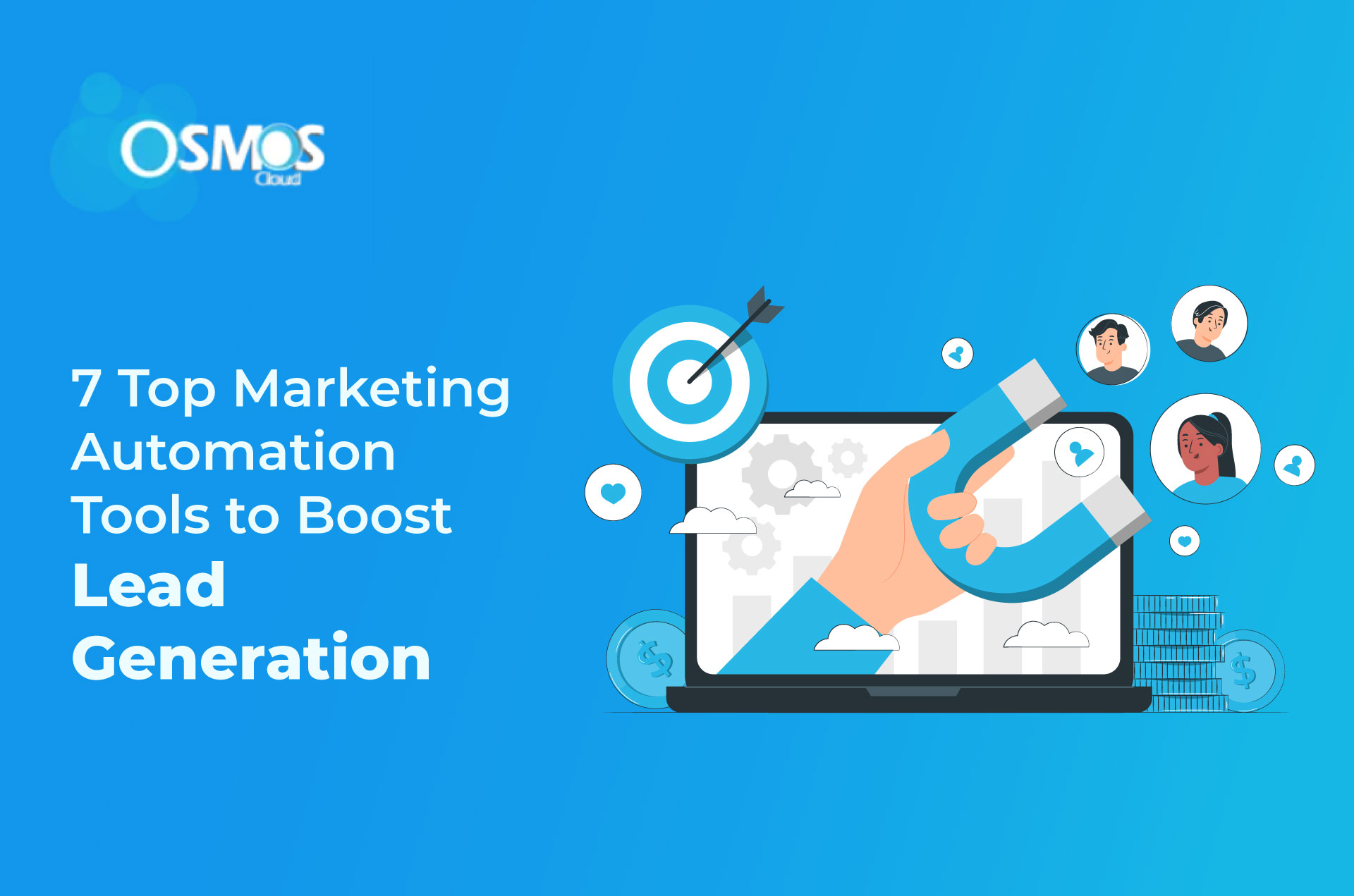Marketing automation is a powerful tool for lead generation. It streamlines tasks, saving time and effort.
In today’s fast-paced business world, generating leads is more critical than ever. Companies need efficient ways to attract and convert potential customers. Marketing automation helps businesses achieve this by automating repetitive tasks. This not only frees up valuable time but also ensures a consistent approach.
| Tool | Features | Pricing | Visit Site |
|---|---|---|---|
| HubSpot | CRM, landing pages, live chat, email marketing, analytics | Free basic CRM, paid starts at $50/month | Visit Site |
| Leadfeeder | Website visitor tracking, CRM integration, email notifications | Free plan available, paid starts at $79/month | Visit Site |
| Drift | Live chat, chatbots, AI, lead qualification | Free plan available, custom pricing | Visit Site |
| Zoho CRM | CRM, lead scoring, sales automation, analytics | Free for up to 3 users, paid starts at $14/month | Visit Site |
| OptinMonster | Exit-intent pop-ups, drag-and-drop builder, A/B testing | Starts at $14/month | Visit Site |
| LinkedIn Sales Navigator | Advanced search, lead recommendations, CRM integration | Starts at $79.99/month | Visit Site |
| Intercom | Live chat, chatbots, email marketing, workflows | Starts at $59/month | Visit Site |
| Pardot (Salesforce) | Email marketing, lead nurturing, lead scoring, CRM integration | Starts at $1,250/month | Visit Site |
| Salesforce Essentials | CRM, lead management, email automation, reporting | $25/user per month | Visit Site |
| Unbounce | Landing pages, A/B testing, pop-ups, sticky bars | Starts at $90/month | Visit Site |
With the right tools, companies can nurture leads through personalized content, track engagement, and analyze data to refine strategies. The result? Increased productivity and higher conversion rates. Dive into this blog to explore how marketing automation can transform your lead generation efforts and drive business growth.

Credit: skylead.io
Introduction To Marketing Automation
Marketing automation is a powerful tool for businesses. It helps in managing marketing tasks and processes. These tasks include sending emails, posting on social media, and managing website actions. Automation makes these tasks faster and more efficient.
What Is Marketing Automation?
Marketing automation uses software to handle marketing activities. This software can manage campaigns, track customer behavior, and analyze data. It helps businesses to target customers better. Automated systems can send personalized messages based on customer actions.
For example, a customer visits your website and looks at a product. The system can send an email about that product. This makes marketing more effective and less time-consuming.
Importance Of Automation In Marketing
Automation is important for several reasons. Firstly, it saves time. Marketing teams can focus on strategy and creativity instead of repetitive tasks. Secondly, it improves accuracy. Automated systems reduce human error. Lastly, it helps in personalizing customer experiences. Personalized messages have higher engagement rates.
Here are some key benefits of marketing automation:
- Efficiency: Automation handles routine tasks quickly.
- Consistency: Ensures consistent communication with customers.
- Personalization: Sends targeted messages based on behavior.
- Data Analysis: Tracks and analyzes customer interactions.
A recent study showed that businesses using automation saw a 14.5% increase in sales productivity. Also, they experienced a 12.2% reduction in marketing overheads.
By using marketing automation, businesses can improve lead generation. It helps in nurturing leads through the sales funnel. This results in higher conversion rates and better customer retention.
Key Benefits
Marketing automation offers many benefits for lead generation. It helps businesses streamline processes and enhance customer experiences. Explore the key benefits below.
Efficiency And Time Saving
Marketing automation saves time and boosts efficiency. Automated tasks free up your team for strategic work. Consider these advantages:
- Automated Email Campaigns: Schedule emails to reach leads at the right time.
- Lead Scoring: Automatically rank leads based on their engagement.
- Task Automation: Reduce manual tasks, allowing focus on high-value activities.
Enhanced Customer Experience
Automation enhances the customer experience. It ensures timely and relevant communication. Here are some ways:
- Personalized Content: Send tailored messages based on user behavior.
- Consistency: Maintain consistent communication across different channels.
- Immediate Response: Use chatbots to engage leads instantly.
These benefits improve lead generation. They make your marketing efforts more efficient and customer-focused.
Tools And Platforms
Marketing automation tools and platforms help businesses streamline their lead generation processes. These tools save time, increase efficiency, and improve the quality of leads. The right marketing automation tool can transform your lead generation strategy.
Popular Marketing Automation Tools
There are many marketing automation tools available. Here are some of the most popular ones:
- HubSpot: A comprehensive tool for inbound marketing, sales, and customer service. It offers features like email marketing, social media posting, and lead scoring.
- Marketo: This tool focuses on email marketing, lead management, and analytics. It is suitable for both small businesses and enterprises.
- Pardot: A Salesforce product designed for B2B marketing. It offers lead scoring, ROI reporting, and email marketing automation.
- ActiveCampaign: Known for its email marketing and CRM capabilities. It offers automation for email campaigns, sales follow-ups, and customer segmentation.
- Mailchimp: Widely used for its ease of use and affordable pricing. It offers email marketing, landing pages, and basic automation features.
Choosing The Right Tool
Choosing the right marketing automation tool depends on your business needs. Here are some factors to consider:
| Factor | Details |
|---|---|
| Business Size | Small businesses may prefer simpler tools like Mailchimp. Larger enterprises might choose comprehensive solutions like HubSpot or Marketo. |
| Budget | Consider the cost of the tool and your budget. Some tools offer free versions or trials. |
| Features | Identify the features you need. Do you need email marketing, CRM, or social media automation? |
| Integration | Ensure the tool integrates with your existing systems like CRM or ERP. |
| User Experience | Choose a tool with an intuitive interface. This will reduce the learning curve for your team. |
Assess your business goals and needs. Make an informed decision to select the right tool.

Credit: gabrielsales.com
Lead Generation Strategies
Lead generation is crucial for any business. Effective strategies help businesses attract potential customers. Marketing automation streamlines these strategies, making the process efficient. Below, we explore two key lead generation strategies: Content Marketing and Email Campaigns.
Content Marketing
Content marketing attracts and engages your audience. Quality content is essential. It establishes your brand as an authority in your industry. Here are some effective content marketing strategies:
- Blog Posts: Write informative and engaging blog posts. Address common problems your audience faces.
- Ebooks and Whitepapers: Offer in-depth insights. These are excellent for capturing leads.
- Videos: Create short, informative videos. They are highly engaging and shareable.
- Infographics: Visual content is easy to digest. Infographics can simplify complex information.
Consistency is key. Regularly update your content to keep your audience engaged. Use SEO best practices to improve visibility. Optimize your content with relevant keywords. This helps in ranking higher on search engines.
Email Campaigns
Email campaigns are powerful for lead generation. They allow direct communication with your audience. Personalization increases engagement. Here are some tips for effective email campaigns:
- Segment Your Audience: Group your audience based on interests and behaviors. This allows for targeted emails.
- Craft Compelling Subject Lines: The subject line is the first thing recipients see. Make it interesting and relevant.
- Provide Valuable Content: Offer insights, tips, and solutions. Ensure your emails are informative and useful.
- Include a Strong Call-to-Action (CTA): Guide your audience on the next steps. Whether it’s signing up for a webinar or downloading an ebook, make it clear.
- Analyze and Optimize: Track the performance of your emails. Use metrics like open rates and click-through rates. Adjust your strategy based on the results.
Automation tools can help in scheduling and sending emails. They also assist in tracking and analyzing performance. This ensures your email campaigns are efficient and effective.
Personalization Techniques
In the evolving world of marketing, personalization is key. It enhances customer experience and drives engagement. By leveraging personalization techniques, businesses can effectively target potential leads. This leads to better conversion rates and a more loyal customer base.
Segmentation
Segmentation involves dividing your audience into distinct groups. Each group shares common characteristics. These can be based on demographics, behaviors, or interests.
For example, you might segment your audience by age, location, or purchase history. By understanding these groups, you can tailor your messages to their specific needs.
| Segmentation Criteria | Examples |
|---|---|
| Demographics | Age, Gender, Income |
| Behavioral | Purchase History, Browsing Activity |
| Geographic | Location, Climate |
Using segmentation helps target messages more effectively. It ensures the right content reaches the right audience.
Dynamic Content
Dynamic content changes based on user interactions. It creates a personalized experience for each visitor. This can include personalized emails, web pages, or ads.
For instance, an email greeting can address the recipient by name. This small touch can significantly improve engagement.
- Personalized Email Greetings
- Tailored Product Recommendations
- Location-Based Offers
Dynamic content keeps your audience engaged. It makes your marketing efforts more relevant and impactful.
By integrating segmentation and dynamic content, businesses can create a highly personalized marketing strategy. This approach not only attracts potential leads but also fosters long-term customer relationships.

Credit: www.osmoscloud.com
Analytics And Tracking
Understanding Analytics and Tracking is essential for effective marketing automation. It helps you know what works and what doesn’t. By tracking data, you can make informed decisions to improve lead generation.
Key Metrics To Monitor
Monitoring the right metrics is crucial. Here are some key metrics to keep an eye on:
- Conversion Rate: The percentage of visitors who become leads.
- Click-Through Rate (CTR): The ratio of users who click on a link to the number of total users who view a page.
- Lead Source: Where your leads are coming from, such as social media, email campaigns, or organic search.
- Cost Per Lead (CPL): The cost of acquiring a new lead.
- Time to Conversion: The time it takes for a lead to convert from initial contact to a qualified lead.
Adjusting Strategies Based On Data
Data helps you adjust your strategies. Here’s how:
- Identify Trends: Look for patterns in your data. For example, if your conversion rate is higher on certain days, focus your efforts then.
- Optimize Campaigns: Use data to tweak your campaigns. Change your messaging or targeting based on what the data shows.
- Allocate Budget: Invest more in channels that bring in the most leads. Reduce spend on less effective channels.
- Test and Learn: Always test new strategies. Use A/B testing to see what works best. Learn from the results and adjust.
A table can help you keep track of your metrics:
| Metric | Description | Current Value | Target Value |
|---|---|---|---|
| Conversion Rate | Percentage of visitors who convert to leads | 5% | 10% |
| CTR | Click-Through Rate | 2% | 4% |
| Lead Source | Origin of leads | Social Media | Email Campaigns |
| CPL | Cost Per Lead | $10 | $5 |
| Time to Conversion | Time from contact to conversion | 7 days | 3 days |
By focusing on these metrics, you can refine your marketing strategies. This leads to better results and more effective lead generation.
Integration With Crm
Integrating your marketing automation with your CRM system can be a powerful strategy for lead generation. This integration ensures that your sales and marketing teams work together seamlessly. It helps you track customer interactions, manage leads, and boost overall efficiency. Let’s explore the benefits and steps for this integration.
Benefits Of Crm Integration
Integrating marketing automation with CRM offers several benefits:
- Enhanced Lead Tracking: Track leads from initial contact to conversion.
- Improved Data Accuracy: Sync data automatically to avoid errors.
- Streamlined Communication: Share information between sales and marketing teams easily.
- Better Customer Insights: Gain a holistic view of customer interactions and preferences.
- Increased Efficiency: Automate repetitive tasks and focus on high-value activities.
Steps For Integration
Follow these steps to integrate your marketing automation with CRM:
- Evaluate Your Needs: Identify your business goals and integration requirements.
- Choose the Right Tools: Select compatible marketing automation and CRM platforms.
- Set Up Data Mapping: Define how data will flow between systems.
- Configure Integration: Use APIs or built-in connectors to link the platforms.
- Test the Integration: Conduct tests to ensure data is syncing correctly.
- Train Your Team: Educate your team on how to use the integrated system effectively.
- Monitor and Optimize: Regularly check the integration and make improvements as needed.
Integrating your marketing automation with CRM can transform your lead generation efforts. By following these steps, you can ensure a smooth integration process.
Best Practices
Marketing automation can boost your lead generation efforts. But it’s essential to follow best practices. This ensures you get the best results. Let’s explore some key strategies.
Avoiding Common Pitfalls
Many businesses make avoidable mistakes with marketing automation. Here are a few common pitfalls and how to avoid them:
- Overloading Contacts: Too many emails can annoy your audience. Aim for balance. Send valuable content without overwhelming them.
- Ignoring Data: Use analytics to guide your actions. Monitor open rates, click-through rates, and conversions.
- Not Segmenting Lists: Personalization is key. Segment your audience based on interests and behaviors. This increases engagement.
Optimizing Campaigns
To get the most out of your campaigns, consider these optimization tips:
- Test Different Elements: Experiment with subject lines, images, and call-to-actions. A/B testing helps identify what works best.
- Use Automation Triggers: Set up triggers based on user actions. For example, send follow-up emails after a download.
- Refine Your Content: Keep your content relevant and fresh. Update your messages regularly to keep your audience engaged.
Implementing these best practices can greatly enhance your lead generation efforts. Stay focused, and your campaigns will thrive.
Future Trends
As marketing automation continues to evolve, staying updated with future trends is crucial. Emerging technologies and methods are reshaping how businesses generate leads. Let’s explore some key trends that are set to dominate the future of marketing automation for lead generation.
Ai And Machine Learning
Artificial Intelligence (AI) and Machine Learning (ML) are transforming lead generation. These technologies help analyze vast amounts of data quickly. AI can predict customer behavior and preferences. This results in more accurate targeting.
Machine Learning algorithms can learn from previous interactions. They can improve over time. This leads to better personalization. Businesses can deliver the right message at the right time.
Consider the following benefits of AI and ML in lead generation:
- Enhanced customer insights
- Improved lead scoring
- Automated customer segmentation
- Predictive analytics
Omnichannel Marketing
Omnichannel marketing ensures a seamless customer experience across multiple channels. Customers interact with brands through various touchpoints. They might use email, social media, websites, or mobile apps.
With omnichannel marketing, businesses can create a unified strategy. This approach helps maintain consistent communication. It also boosts engagement and lead generation.
Key elements of effective omnichannel marketing include:
- Consistent branding across all channels
- Integrated marketing campaigns
- Personalized customer experiences
- Real-time data synchronization
The future of marketing automation for lead generation is promising. By leveraging AI, Machine Learning, and omnichannel marketing, businesses can stay ahead. They can generate more leads and enhance customer experiences.
Frequently Asked Questions
What Is Marketing Automation?
Marketing automation uses software to automate marketing tasks. It helps to nurture leads and personalize marketing efforts. This improves efficiency.
How Does Marketing Automation Generate Leads?
Marketing automation identifies potential customers. It engages them with personalized content. This builds relationships and converts visitors into leads.
Why Is Marketing Automation Important For Businesses?
Marketing automation saves time and resources. It ensures consistent communication with leads. This increases the chances of conversions.
Which Tools Are Best For Marketing Automation?
Popular tools include HubSpot, Marketo, and Pardot. These tools offer robust features for lead generation and nurturing.
Conclusion
Marketing automation boosts lead generation efforts. It saves time and increases efficiency. Businesses can nurture leads effectively. Automation tools help in tracking customer behavior. This provides valuable insights for better strategies. Implementing automation can improve conversion rates. Businesses stay ahead of competitors by using these tools.
Start integrating automation into your marketing today. Achieve better results and grow your business.














